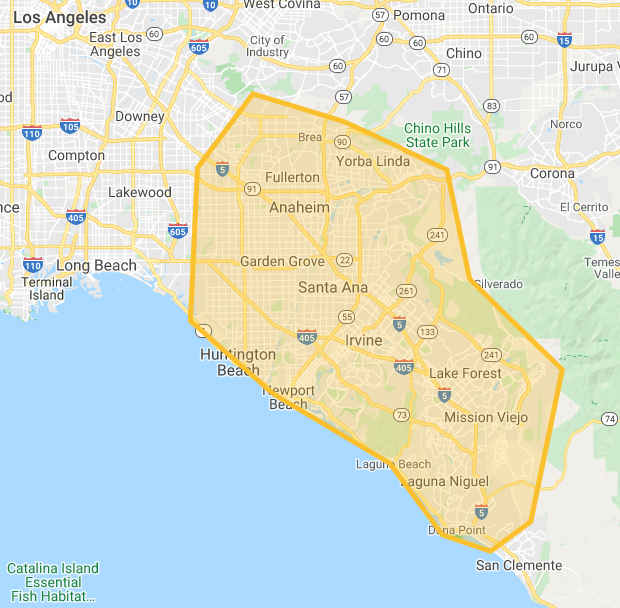What To Do If My True Commercial Refrigerator Isn’t Cooling Properly
A commercial refrigerator that cools food products to the right temperature is essential to any restaurant or food service business. And, although True is a highly-respected and reliable brand, their appliance, like all other commercial appliances, will need a bit of repair and maintenance work from time to time. Fortunately, if your True commercial refrigerator is not cooling properly, there are a few simple troubleshooting steps you can take to diagnose and possibly even repair the issue on your own.
Make Sure to Perform Regular Maintenance
Above anything else, preventing problems from occurring in the first place is much less time-consuming and stressful than fixing them when they do happen. Therefore, be sure to regularly carry out maintenance checks to ensure you don’t fall victim to any issues that could have easily been avoided with a bit of proper preventative care.
Cleaning Condenser Coils
Good maintenance practice involves cleaning your unit’s condenser coils regularly. One of the most likely causes of a True commercial refrigerator not cooling correctly is unclean and clogged up condenser coils. If you notice an excessive amount of ice building up in your refrigerator, this might also be caused by dirty condenser coils.These coils are essential for keeping the refrigerator cool as they supply coolant throughout your unit, and help disperse any heat to the outside.Especially in a commercial kitchen, debris, accumulated food grease, and grime can dramatically diminish the coils’ effectiveness.This can lead to warmer temperatures and food being improperly stored and so wasted, and equally, can lead to the refrigerator freezing up and accumulating on the inside.
Fortunately, cleaning the coils regularly will help you to avoid these issues.To clean the coils, turn off the connecting power and allow the unit’s coils to cool down. The coils are usually located either behind the top/bottom grate or on the refrigerator’s back wall. Using a special appliance brush, you can gently remove dirt and dust from the coils and the immediate area. Then, use a vacuum to clean any extra dust you couldn’t get at with the brush. Make sure to use an anti-grease cleaning product to remove the oils and grease as well. Finally, replace the grates, reactivate the power source, and check to see if your unit is functioning properly.


Have a Look at The Temperature Settings
You might also be having problems because of a fault with the temperature control gauge. The thermostat, located inside the refrigerator, measures the interior temperature and communicates with the control board to initiate the compressor when more cooling is required.The thermostat should ideally read somewhere around 38°F/3.3°C. If it is significantly higher or lower, this could be a sign that it’s faulty. If that’s the case, then the compressor won’t respond appropriately either, and there won’t be enough cool air produced.Also, check that no food products are blocking the thermostat, which can alter the reading. Then, you can check the thermostat’s accuracy by using a thermometer. If the thermometer reads a different temperature to the thermostat, then the latter is likely defective and needs to be replaced.
Ensure The Door Closes Tightly
If your commercial refrigerator is not getting cold enough, double-check the doors are closing tightly and correctly. To do this, you can place a piece of paper in with the door as you close it. If you can remove it easily even while the door is closed, then you can be certain that your door is faulty and not closing correctly. A rubber gasket around the door’s perimeter forms a seal preventing any cold air from escaping and any warm air from entering. If this gasket is damaged or torn, then cold air will get out, and warm air will enter. This will invariably increase the temperature of the refrigerator. Likewise, double-check that the hinges are all in the correct alignment, allowing the door to close completely as faulty hinges might also allow cool air to escape. You can tighten loose hinges yourself, but if they are broken and/or the gasket is torn, then you will need to call a professional to come and replace them.


Compressor Leaking Freon
If your refrigerator fails to cool to the right temperature, this might also be down to a freon leak.Freon is stored in the compressor and should never need refilling or topping up. If your refrigerator is, in fact leaking freon, this is most likely due to a puncture. A refrigerator with a depleted supply of freon will likely still continue to run, however, it won’t be able to cool down sufficiently. So if you can hear your motor running, then you can rule out a leak as the problem.Signs that it might be a leak are an unusual odour coming from the refrigerator or residue on the refrigerator floor. Freon is colourless, so besides any residue, it will not be visible.If you think you might have a freon leak, you will need to call a professional immediately. This is not something you can fix on your own, and refrigerants can be potentially dangerous when touched by those without expert training.
Damaged Main Board
A malfunctioning “motherboard,” or mainboard, can also cause problems regulating a commercial refrigerator’s internal temperature.If, in addition to the temperature issues, you can also detect a constant clicking noise or can hear the motor intermittently making a whining noise, then you can be quite sure that your problem lies with the mainboard.




